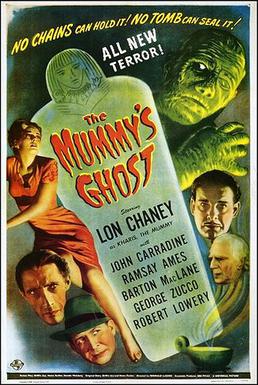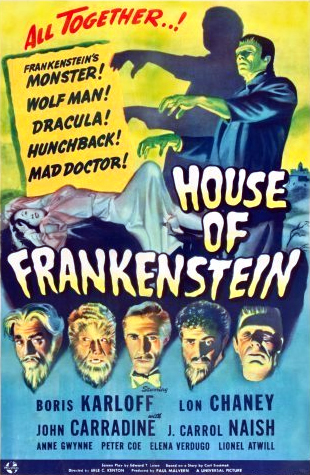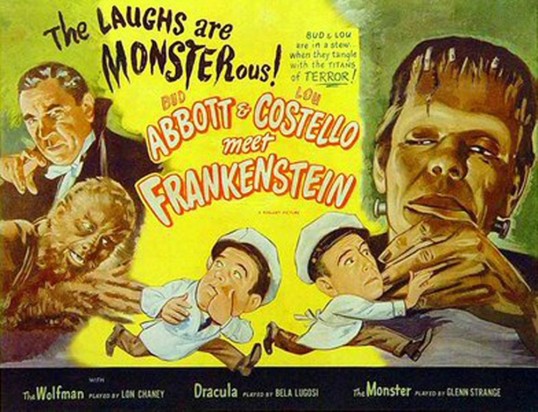When last we checked in with Kharis the Mummy, he was running into a swamp in Massachusetts, carrying the reincarnation of Princess Ananka with him. Chasing after him were the standard towns people with torches and guns. It’s not a Universal horror film without angry villagers, even if the movie itself is taking place in Mapleton, Massachusetts.
Upon entering the swamp, both Kharis and Ananka sunk under the water, traumatizing Ananka’s boyfriend but apparently bringing Kharis’s reign of terror to an end.
Well, not so fast!
The 1944 film, The Mummy’s Curse, opens with the townspeople talking about how Kharis continues to haunt the old swamp, so much so that most of the locals refuse to work in the swamp. Oddly enough, though, the townspeople are suddenly a mix of Cajuns and gypsies. (The film even opens with a gypsy woman singing a song in a bar.) The swamp has now become a bayou. We are repeatedly told that the film is taking place in the same location as the previous Mummy films but suddenly, that location has changed from Massachusetts to Louisiana.
As for the plot of The Mummy’s Curse, it all centers around the swamp. The Southern Engineering Company (and that really doesn’t sound like a Massachusetts company) is draining the swamp. The locals are worried that draining the swamp will bring back the curse of the mummy. Two representatives from the Scripps Museum show up and announce that they want to search the drained swamp for the remains of the mummies. Dr. James Halsey (Dennis Moore) is typical of the archeologists who tend to show up in these Mummy films. Meanwhile, his associate is Dr. Ilzor Zandeeb (Peter Coe) who — surprise! — is that latest Egyptian high priest to come to America to try to recover the bodies of Kharis and Princess Ananka.
Ananka (Virginia Christie) is the first to emerge from the swamp, though she has no memory of who she is. When she is discovered on the side of the road by Prof. Halsey and his love interest, Betty (Kay Harding), they allow her to stay at their camp on the edge of the swamp. Everyone is really impressed by the fact that this amnesiac knows so much about ancient Egypt. Eventually, Kharis (Lon Chaney, Jr., again tightly wrapped in bandages) eventually emerges from the swamp as well, determined to protect Ananka.
The Mummy’s Curse was the final film to feature Lon Chaney, Jr. as Kharis. Unfortunately, it’s pretty forgettable and certainly not a satisfying conclusion to the story of one of Universal’s original monsters. A good deal of the film’s 60-minute running time is taking up with flashbacks to previous Mummy films and it seems like it takes forever for Kharis to actually get around to spreading the usual mummy mayhem. Though it may be too much to ask for too much continuity from these films, the sudden switch from Massachusetts to Lousiana is distracting for those of us who have actually invested the time to watch the previous Mummy films. One gets the feeling that, by the time this film went into production, no one involved really cared that much about poor Kharis and his never-ending mission to protect his princess.
Previous Universal Horror Reviews:
- Dracula (1931)
- Dracula (Spanish Language Version) (1931)
- Frankenstein (1931)
- Island of Lost Souls (1932)
- The Mummy (1932)
- The Invisible Man (1933)
- The Bride of Frankenstein (1935)
- Dracula’s Daughter (1936)
- Son of Frankenstein (1939)
- Black Friday (1940)
- The Invisible Man Returns (1940)
- The Mummy’s Hand (1940)
- The Wolf Man (1941)
- Ghost of Frankenstein (1942)
- Invisible Agent (1942)
- The Mummy’s Tomb (1942)
- Frankenstein Meets The Wolf Man (1943)
- Son of Dracula (1943)
- House of Frankenstein (1944)
- The Invisible Man’s Revenge (1944)
- The Mummy’s Ghost (1944)
- House of Dracula (1945)
- Creature From The Black Lagoon (1954)



